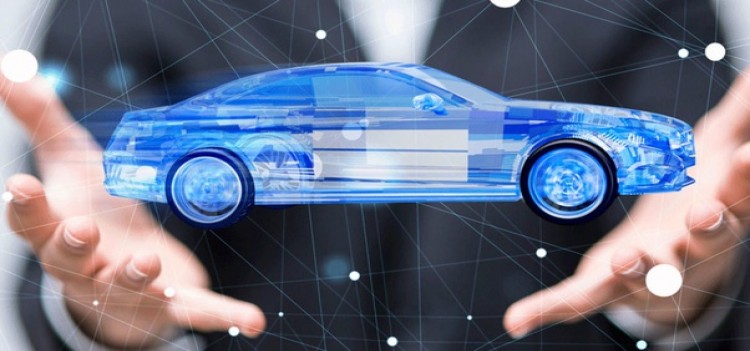Inner combustion engines, over a period, have been established to be imperative to the transportation quarter. Lamentably the secure survival of these engines has been placed to impeach with the aid of the twin problems of fossil gas starvation and rapid environmental degradation. Several non-petroleum fuels consist of Ethyl alcohol. Methyl alcohol. Gasohol, Compressed Natural Gas (CNG), Liquefied Petroleum Gasoline (LPG)/ Propane, Biodiesel, Dimethyl Ether (DME), biogas, producer Fuel, and a bunch of others have been tried in specific nations for vehicular application to positive degrees of achievement.
The broader goal has been to discover renewable and environment-friendly substitutes for petroleum fuels. Hydrogen has an infinite source capacity and extraordinarily “easy-burning “traits. Accordingly, it ensures eventual freedom from energy-surrounding crises. An integrated method of hydrogen electricity generation entails a tricky dialogue of the gasoline’s manufacturing, garage, transmission, and utilization. The environment compatibility and the protection components also are of importance. A detailed discussion on these aspects goes past the scope of this paper, Wide Info.
As far as manufacturing capacity is concerned, the basic aid of hydrogen is recyclable in an Herbal way. It starts offevolved with a molecule of water being cut up using any fossil or non-fossil supply (which includes nuclear, sun, wind, natural waste, etc.). Upon combustion, it produces water vapor as the fundamental exhaust, which, in the long run, goes again to the biosphere from which it had come.
The discussions here are constrained to hydrogen as an alternative fuel in Internal combustion engines. While considering hydrogen as alternative gasoline for motors, it is crucial to discuss the implication of a few common combustion traits of hydrogen fuel. At the same time, it is utilized in IC engines/cars. Minimum ignition electricity, a wide range of flammability restrictions, excessive flame speed, and quenching distance are Some particular properties that want to be very judiciously monitored to acquire the hanging capabilities in progressed thermal performance and “almost zero-emission” characteristics of hydrogen engines.

Hydrogen molecule, the smallest and lightest inside nature, diffuses rapidly via air and will incombustible proportions immediately. Moreover, because of low emissivity, radiation dangers from a hydrogen-air fireplace are much less than from a hydrocarbon fireplace. The extensive flammability variety of hydrogen (4% to 75% by volume) provides a powerful means of “great governing.”
As a result, the engine energy may be managed using the various hydrogen-air ratios of the aggregate, thereby removing pumping losses related to throttling. Hydrogen is flammable over different equivalence ratios (from an ultralean mode to a bit above stoichiometric). Unthrottled engine operation at a high compression ratio and coffee equivalence ratio results in better thermal performance. Harmful pollutants such as unburnt hydrocarbon, CO, particulate matter, sulfur oxides, smoke, and so forth are intrinsically absent in hydrogen combustion in engines/motors. NOx is the best pollutant of the problem, which can be considerably decreased using a low w equivalence ratio or adopting exhaust gas recirculation.
The minimal ignition electricity required for igniting hydrogen is an order of magnitude lesser than gasoline. This property guarantees prompt ignition, and the car wishes for a lesser sophisticated ignition device. Then again, these belongings make the system liable to floor ignition, which could end in a backfire, pre-ignition, and a speedy rate of stress rise. As is widely stated, backfire has been the principal stumbling block to increasing hydrogen-fuelled Internal combustion engines /automobiles. The depth of backfire has resulted from a simple misfire to the general devastation of the engine. Take a look at the rig. Hydrogen flame is invisible and odorless.
READ MORE :
- Central trade unions get support from RBI employees for September 2 industrial strike
- Ten Tips for Comparing Health Care Policies
- A year after one Syrian child’s death shook the world, another fight for survival
- Automobile Sector – The Indian Scenario!
- Health Care Reform – Busting The 3 Biggest Myths Of ObamaCare
Therefore, in the initial phase of hydrogen engine studies, backfire caused excessive harm. Finally, the frequency and depth of backfire have been decreased through lean operation, exhaust Gasoline recirculation, and fuel injection. Active research within the Indian Institute of Generation, Delhi, spanning nearly three decades, has shown that the gasoline induction technique is essential for steady, smooth engine operation. Various fuel induction options were exhaustively investigated, from simple carburetion to high-precision direct cylinder injection. It has been observed that an accurately designed Timed manifold injection(TMI) is the most reliable and effective technique for controlling the backfire.



